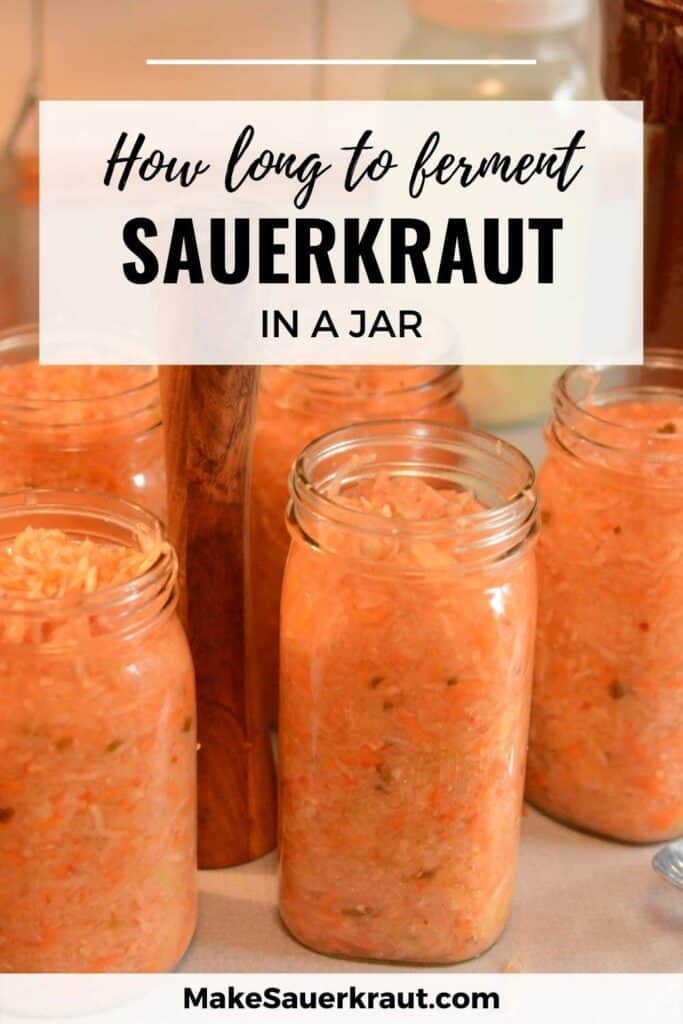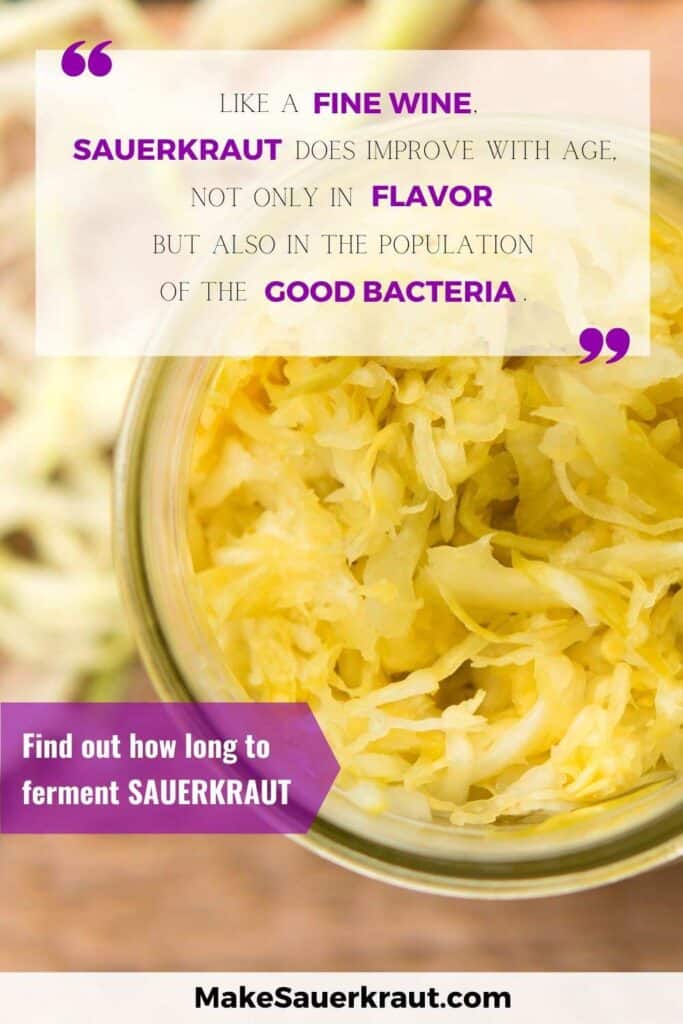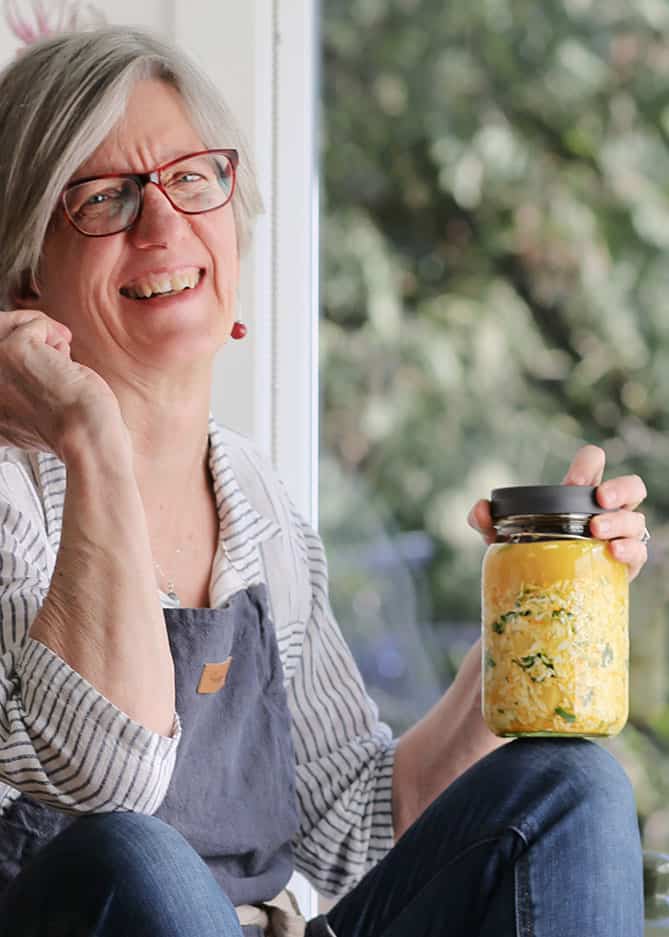Wondering how long to ferment sauerkraut to achieve the best flavor and maximum health benefits? Like a fine wine, sauerkraut improves with age, and the process is all about timing. Let’s break it down!
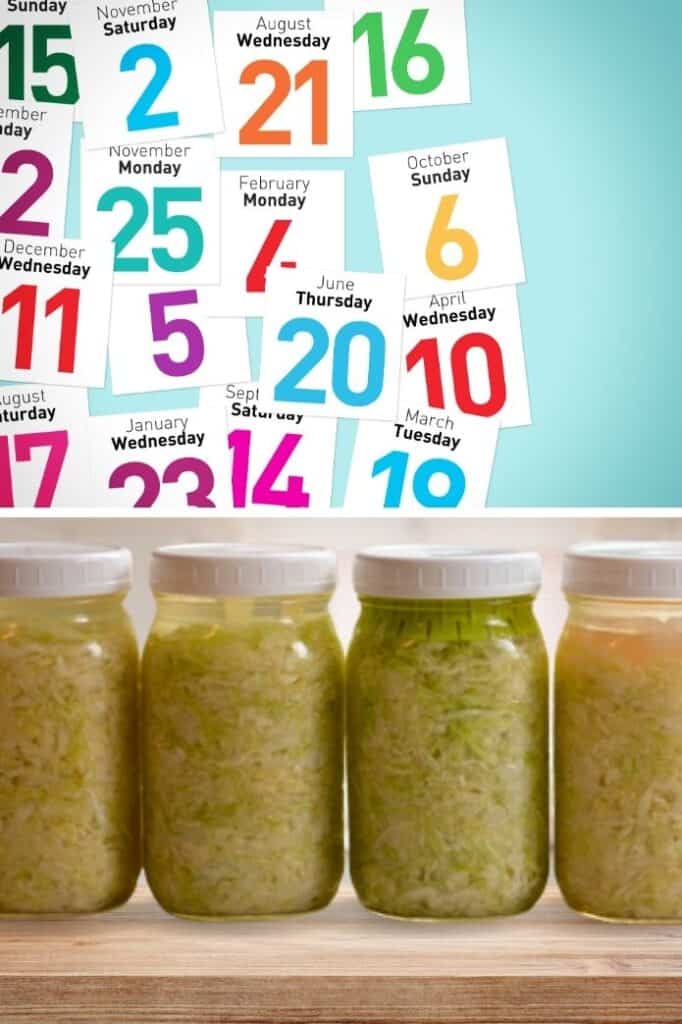
Fermentation is a fascinating process that not only enhances the flavor of sauerkraut but also boosts its health benefits by multiplying beneficial lactic acid bacteria (LAB) into the trillions.
To reap these benefits, it’s important to understand how long to let your sauerkraut ferment. The duration depends on various factors, including the stages of fermentation, the amount of salt used, and the ambient room temperature.
In this post, we’ll dive into the three stages of fermentation, each crucial for developing that perfect tangy taste and probiotic richness.
You’ll learn how salt concentration, temperature, and vegetable quality affect the fermentation time. We’ll cover everything from the initial salt-tolerant bacteria phase to the final stage, where the beneficial bacteria peak.
By the end, you’ll know how to achieve the ideal fermentation time for your sauerkraut, ensuring it’s both safe to eat and bursting with flavor.
Fermentation Stages
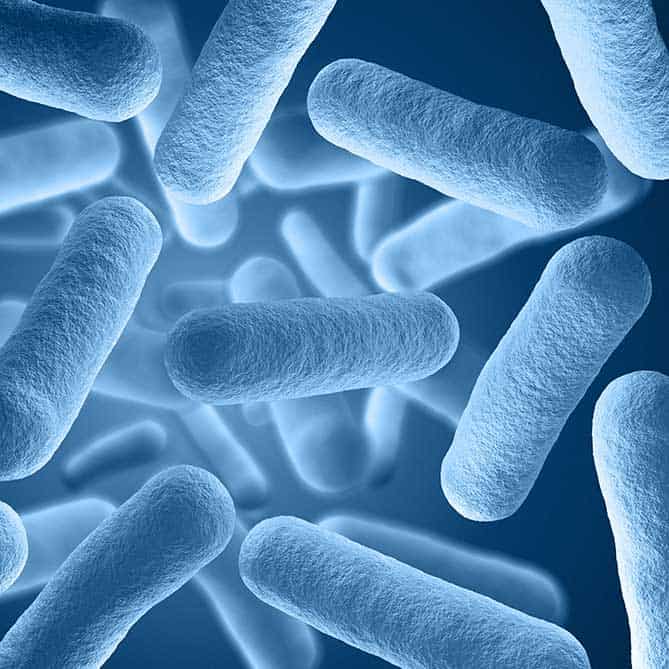
Stage One: Days 1-5, approx.
Salt tolerant bacteria produce carbon dioxide to transform fermentation vessel into an anaerobic environment
The first stage of fermentation starts from the moment you mix salt into your sliced cabbage and prepared vegetables.
Surprisingly, the levels of LAB are at extremely low levels in the starting ingredients—sliced cabbage, specific vegetables used in any particular batch, salt, and seasonings—which may suggest that only trace amounts of LAB are necessary to initiate fermentation. Therefore, there is no need to speed up the process by using a starter.
In this first stage of fermentation, the L. mesenteroides—the most common organisms associated with vegetables—do most of their work. They are the smallest of the three bacteria studied and are able to tolerate salty conditions.
They break down available sugars to produce lactic acid, acetic acid (vinegar), ethyl alcohol, and mannitol, all of which contribute to the characteristic flavor of high-quality sauerkraut. If the fermentation temperature is higher than 72° Fahrenheit (22° Celsius) they might not grow, which would be detrimental to the flavor of sauerkraut.
The L. mesenteroides also produce carbon dioxide (soda gas), hence the bubbles you see floating to the surface along with brine being pushed out of the jar. The carbon dioxide displaces any oxygen in the jar—or brine—to help create an anaerobic fermentation environment.
Once all the oxygen is displaced, stage two begins.
Stage Two: Days 5 to 16, approx.
Bacteria, that tolerate salt and acid, create lactic acidic, a preservative
Stage two begins around day 5, after the bacteria in stage one, have died off. The L. plantarum does most of the work for the longest time period, from day 5 to day 16. Its only job is to eat sugar and produce lactic acid.
Lactic acid acts as a preservative, supports digestion, inhibits the growth of harmful bacteria, increases the bio-availability of Vitamin C, among other jobs. Ideally, you don’t want to stop the work of the lactic acid bacteria by putting your sauerkraut into cold storage before day 16.
Stage Three: Days 16 to 21, approx.
Beneficial bacteria create lactic acid for a greater flavor profile
The L. pentoaceticus (L. brevis) “finish off” the sauerkraut during days 16-21 by lowering the acid level a slight bit to 2.5-3.0% and dropping the pH to 3.1 – 3.7. Once there is no more sugar, fermentation ends.
The acidic and low pH environment of stage three only allows for the growth of good bacteria. The lactic acid development during this stage contributes greatly to the flavor profile of your batch of sauerkraut.
How Long to Ferment?
So, make it your goal to ferment for the full 3 weeks if your fermentation temperature is in the ideal range of 65-72° Fahrenheit (18–22° Celsius). This may require a bit of patience that may require some “growing into” time.
When I teach my workshops, I have people open their sauerkraut on day 7 and taste. If they like it, put it in the fridge.
Then, with the next batch they make, ferment it for two weeks. Taste and evaluate. If it is too salty, there is not enough tang or if it is too crunchy, let it ferment longer and try it in another week. This is a great way to begin to taste the development in flavor over time. Your taste buds will gradually notice subtle differences in flavor.
The best quality sauerkraut is fermented for a minimum of 14 days with 21 being even better. This time span ensures good flavor development, proper acidity level, and complete consumption of all the sugars in the cabbage.
Too short of a fermentation time robs you of SO MANY beneficial postbiotic compounds. Cabbage fermented between 14-21 days has three times more beneficial bioactive compounds than cabbage fermented in less than 14 days.
How Long to Ferment Sauerkraut Kaitlynn, Cultured Guru
Salt Concentration, Temperature, and Vegetable Quality
There are three variables you can play with that impact the taste, texture, and tang of your sauerkraut:
- Salt Concentration
- Temperature
- Vegetable Quality
I like to keep coming back to these factors when tasting my sauerkraut. Some like it salty, some like it soft, some like it crunchy. And, some want as many beneficial bacteria swarming around in their jar as possible.
Salt Concentration
2% salt concentration based upon weight of ingredients
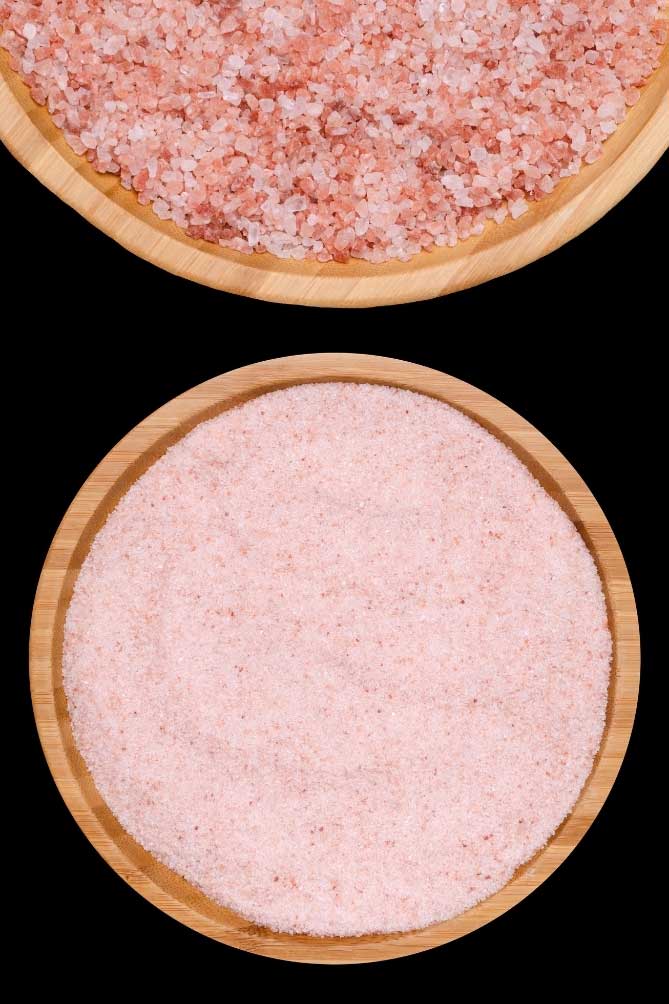
Salt is necessary for fermentation. It ensures that the beneficial bacteria grow and proliferate and that the pathogenic bacteria die off. The best quality sauerkraut is made with a 2% salt concentration, with the acceptable range being 1.5% to 2.5%.
Too little salt speeds up fermentation and might produce soft or slimy sauerkraut. Too much salt slows down fermentation and will inhibit the growth of the lactic acid bacteria, just the bacteria you need to safely preserve your sauerkraut.
To determine the correct amount of salt to add, you need to weigh your vegetables using a kitchen scale. It is advisable to also weigh your salt.
Before I understood that one tablespoon of salt could weigh differently than another tablespoon of salt, I always measured my salt—by volume—as follows:
1 tablespoon of salt (or 16 grams if weighing your salt) for 1 ¾’s pounds (28 ounces, 800 grams) cabbage and vegetables, or
3 tablespoons of salt (or 48 grams if weighing your salt) for 5 pounds (2400 grams, 2.4 kilograms) of cabbage and vegetables.
This can work if the weight for the volume of salt the tablespoon you’re using happens to be the necessary 16 grams (for an 800 gram batch of sauerkraut). I have two sets of measuring spoons in my kitchen that I use interchangeably. One measures out 16 grams of Himalayan pink salt; one 21 grams. That’s a 24% difference in weight. See why it’s important to weigh your salt?
So, to correctly determine your salt concentration, weigh your ingredients and salt. To do so, take the weight—in grams—of all the ingredients used for a particular batch of sauerkraut and multiply by 0.02. (That’s 2% converted to a decimal.)
For example, the ingredients for a typical quart (liter) batch of sauerkraut weigh 800 grams:
800 x 0.02 = 16.00. Add 16 grams of salt to your sauerkraut mixture.
When to adjust salt concentration
Salt concentration can be adjusted for fermentation temperatures as follows:
If you are fermenting at warmer household temperatures, use a salt concentration of 2.5% to slow fermentation down a bit.
If you are fermenting at cooler household temperatures, use a salt concentration of 1.5% to speed fermentation up a tad.
More on salt:
Best Salt to Use When Making Fermenting Sauerkraut
How Much Salt do I Use to Make Sauerkraut?
Salt by Weight for Delicious Sauerkraut… Batch after Batch
Temperature
Ideal 65-72 Degrees Fahrenheit (18–22 Degrees Celsius)

The best quality sauerkraut is produced at a temperature range of 65-72° Fahrenheit (18–22° Celsius) without more than a 5° Fahrenheit (3° Celsius) swing in temperature with the sweet spot being 65F (18C).
If your house is warmer than this, try fermenting for a shorter time period. If your house is cooler, then you will need to ferment for a longer time period. Or, set up a cooler environment.
Do find a place to ferment that is below 75° Fahrenheit (24° Celsius). This may require testing out different spots in your home or not fermenting during the warmer summer months. Traditionally, sauerkraut is made in the fall when temperatures are lower. In Korea, pots are buried in the ground in the fall to ensure ideal fermentation temperatures in their warmer climate.
If you have great temperature swings in your house—maybe it’s winter and you’re heating your house with a wood store—then you are continually stopping and starting the process and may end up with mushy kraut and need to look for a more stable environment.
How to adjust fermentation time based upon temperature
65° Fahrenheit (18° Celsius), has the best flavor and color and higher vitamin C levels.
60° Fahrenheit (16° Celsius), the curing may take 6 to 8 weeks.
70 to 75° Fahrenheit (21-24° Celsius), however, also has good flavor and is ready in only a week or two.
Above 90° Fahrenheit (32° Celsius), the kraut will ferment in just seven to ten days, but most of the work will be done by homofermentative bacteria, which produce lactic acid but not acetic acid and other flavors which contribute to the complex flavor of really good sauerkraut.
Vegetable Quality
The Best Quality, Ideally Local and In Season
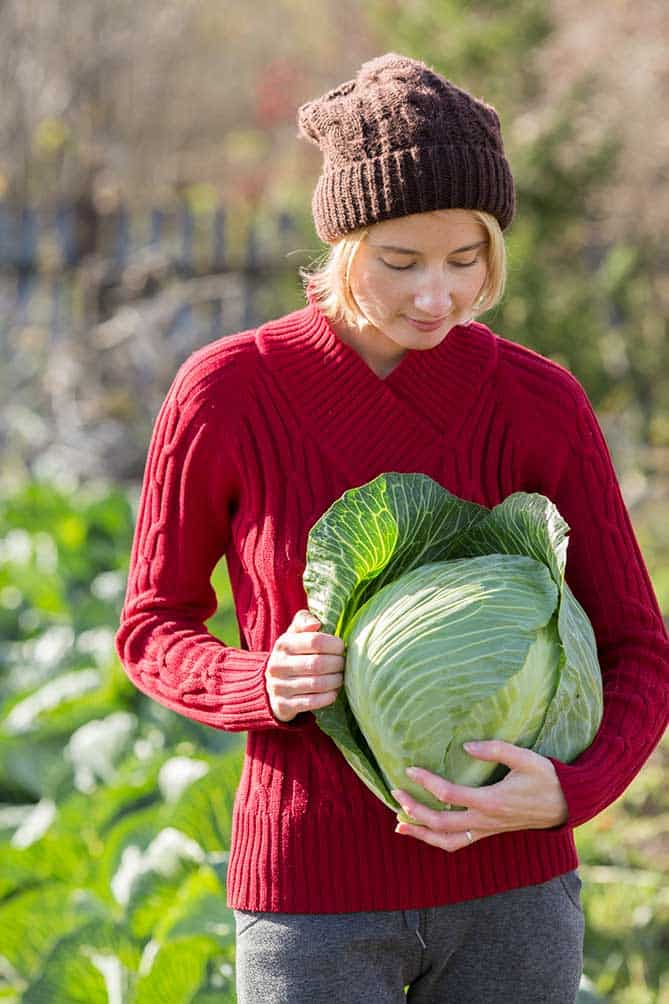
Cabbage and vegetables of the highest quality will produce the best sauerkraut. More on vegetables to use for sauerkraut here.
Remember, you are feeding the bacteria that live on the cabbage. Feed them well with high-quality, ideally locally grown vegetables.
In addition, the sweeter the cabbage the higher the final quality of the sauerkraut. Remember, the lactic-acid bacteria eat the sugars (carbohydrates) in the cabbage. The sweeter it is, the more they have to eat.
Learn more about how to choose the best cabbage for sauerkraut.
In Closing: Safety, Flavor, Bacteria.
So, just how long should you ferment your sauerkraut?
Safety. For starters, ferment for a minimum of 7 days to ensure that the pH is at a safe level (below 4.0) and that enough lactic acid has been produced to consider it preserved.
Flavor. Many have a hard time waiting for three weeks with their first few jars of sauerkraut. Plus, it is rather unnerving to leave a jar of food just sitting on your counter. As you feel more comfortable inviting trillions of critters from the microbial world into your kitchen, you will be able to let it ferment for a longer time period.
To start with ferment your sauerkraut until you like the taste, texture, and tang of it! After all, you have to like it to eat it. But, do ferment it for a minimum of 7 days.
Bacteria. The purists out there will tell you the minimum time to ferment is three weeks and that is what I aim for. This three-week time period gives an opportunity for a wider spectrum of beneficial bacteria to establish themselves. Some strains of bacteria populate that jar of yours at one week and others peak at the three-week mark.
Play with it! Have fun! Realize that every batch will be different. As much as we want to control the fermentation process, really we can’t. But, go back to salt concentration, temperature, and vegetable quality when adjusting how long to ferment your sauerkraut.
And remember, your sauerkraut will continue to ferment in your refrigerator, though at a much slower rate. So, if you feel uncomfortable leaving it on your counter to ferment for 3-4 weeks, then move it to your refrigeration and forget about it for a few months. The flavor will have evolved and developed at a deeper level.
All these nitty-gritty details are covered in my photo-rich easy-peasy recipe. Check it out, you’ll be pleasantly surprised!



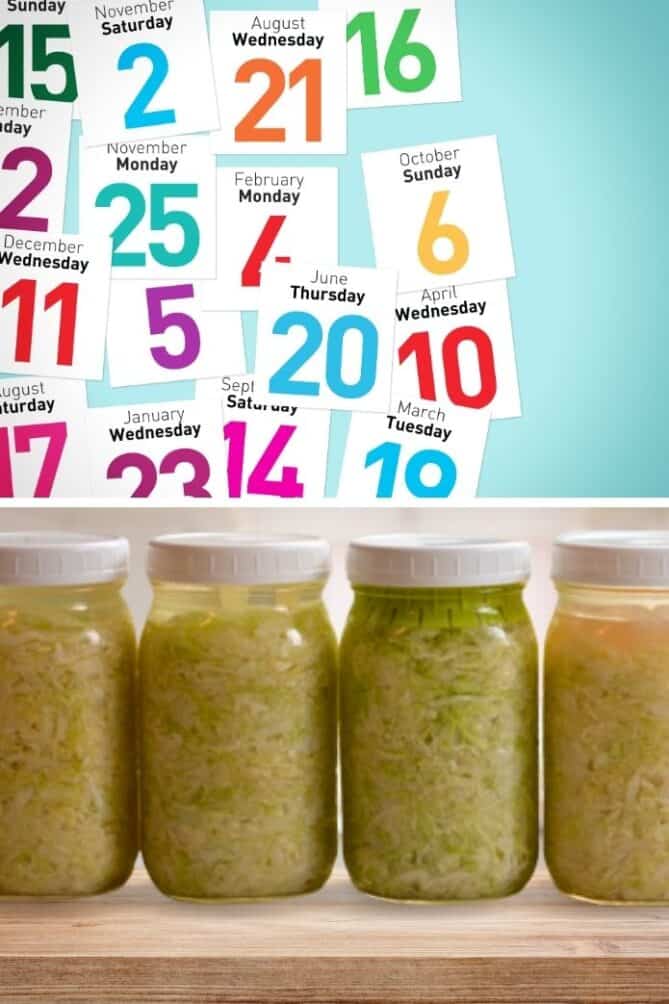

 This post may contain affiliate links which won’t change your price but will share some commission.
This post may contain affiliate links which won’t change your price but will share some commission.